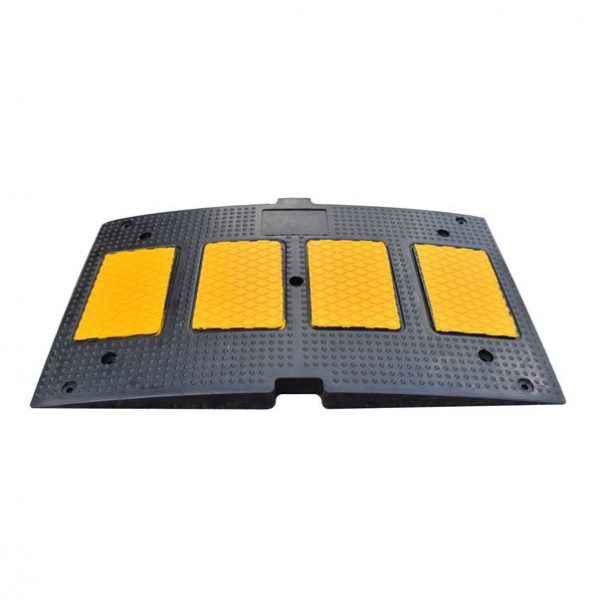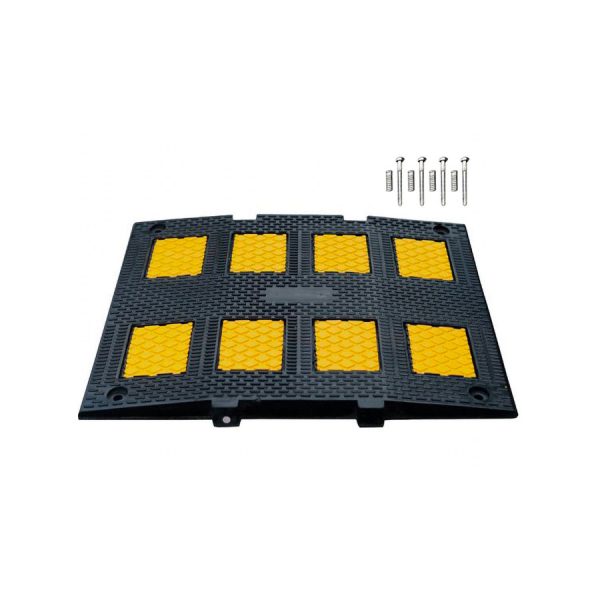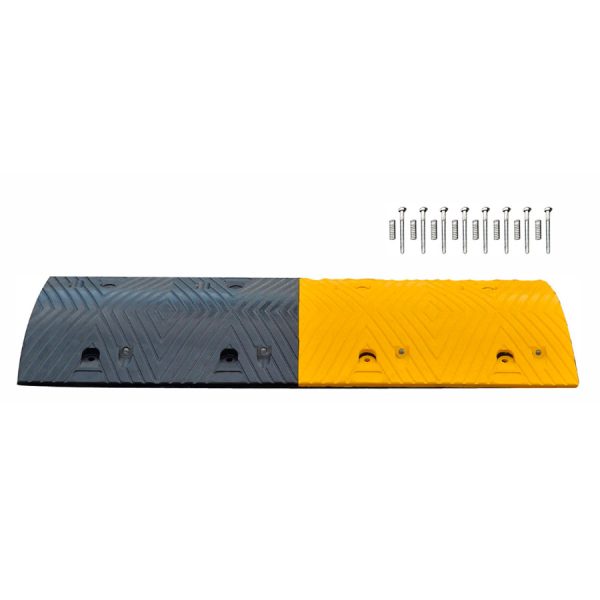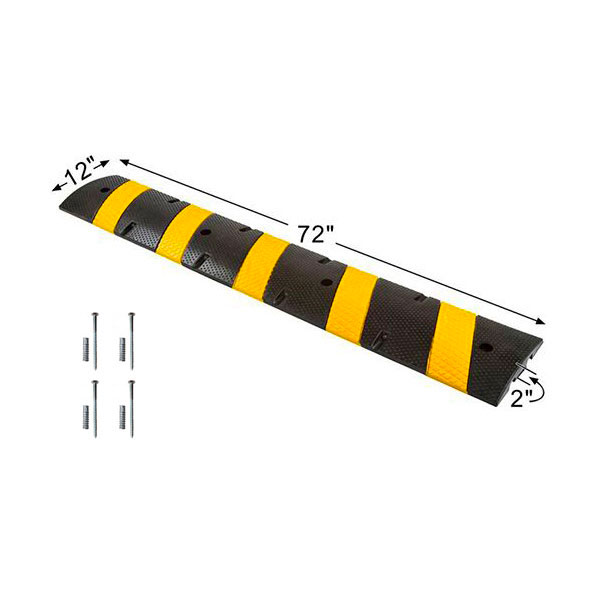High-quality speed bumps
-

Heavy Duty Rubber Speed Hump – Yellow / Black – Low Profile Speed Bump – Hardware Included
Price: $79.00/piece- Suitable to improve safety for parks, school zones, commercial areas, residential areas, industrial areas, sporting venues
- Specially designed to slow down vehicle traffic
- High quality rubber construction to improve durability, ideal for any type of weather conditions
- Bright yellow embedded EPDM rubber to improve visibility
- Male and Female end cap available to create 360° transitions
-

Speed Bumps for dirt roads and gravel roads. 2FT Wide
Price: $49.00/piece- Made out of heavy duty rubber material
- Excellent product to reduce vehicle traffic speed and increase safety
- Embedded yellow EPDM rubber for high visibility
- Perfect for any type of weather conditions, this product is very resistant, will not crack or break
- 4 Mounting Holes (1-1/8’D Countersink, 1/2’D Mount Hole)
-

Premium Speed Bump Hardware Included
Price: $69.98/piece- Ideal for residential, commercial, industrial areas, parks, sporting venues, school zones, etc.
- Excellent to effectively slow down vehicle traffic.
- The end cap protects section ends from wear and tear.
- Durable bright rubber yellow section and en cap, great for visibility.
- Mounting screw NOT included. Select below if you want to add them to your order and if you need them for asphalt or concrete.
-

Rubber Speed Bumps – 6’ Super HD
Price: $74.98/piece- Ideal for residential, commercial, industrial areas, parks, sporting venues, school zones, etc.
- Excellent to effectively slow down vehicle traffic.
- The end cap protects section ends from wear and tear.
- Durable bright rubber yellow section and en cap, great for visibility.
Mounting screws INCLUDED. We are the only ones that include the hardware for free.BUY NOW
Unimat high-quality speed bumps
High-quality speed bumps are an effective tool for controlling vehicle speed in areas where safety is a concern. When designed, installed, and maintained correctly, they contribute to reducing accidents, protecting pedestrians, and enhancing overall road safety. However, it’s essential to strike a balance between traffic calming and maintaining the flow of traffic to avoid creating additional congestion or inconvenience for drivers.
Here are some characteristics of high-quality speed bumps:
1. Material: High-quality speed bumps are often made from durable materials such as rubber, recycled plastic, or asphalt. These materials are designed to withstand the weight and impact of vehicles without deteriorating quickly. Rubber and plastic speed bumps are also more forgiving on vehicles compared to concrete or metal alternatives.
2. Height and Shape: The height and shape of a speed bump are critical to its effectiveness. Speed bumps are typically between 3 to 4 inches in height and have a rounded or flat-top profile. The shape is engineered to slow down vehicles while providing a smoother ride when approached at the recommended speed.
3. Visibility: High-quality speed bumps are usually painted with reflective paint or equipped with reflective markers to enhance their visibility, especially at night or during adverse weather conditions. This helps drivers see them from a distance and slow down in time.
4. Installation: Proper installation is crucial for the effectiveness and longevity of speed bumps. They should be installed at the appropriate locations, adhering to local traffic regulations and guidelines. The installation process should include proper anchoring to the road surface.
5. Spacing: The spacing between speed bumps is essential to maintain a consistent traffic flow and minimize driver frustration. Typically, they are placed at intervals of 100 to 250 feet apart, depending on local regulations and road conditions.
6. Accessibility: Speed bumps should be designed to accommodate emergency vehicles, buses, and larger vehicles without causing significant discomfort or damage. This is often achieved by incorporating tapered edges or ramps.
7. Maintenance: High-quality speed bumps are designed to require minimal maintenance. However, regular inspections and repairs, if necessary, are essential to ensure their continued effectiveness and safety.
8. Local Regulations: It’s essential to follow local regulations and guidelines when installing speed bumps. These regulations may dictate the permissible height, length, and placement of speed bumps to ensure they do not cause excessive disruption to traffic flow.
9. Community Input: In residential areas, community input and support for speed bump installations are often considered to strike a balance between traffic calming and residents’ convenience.

